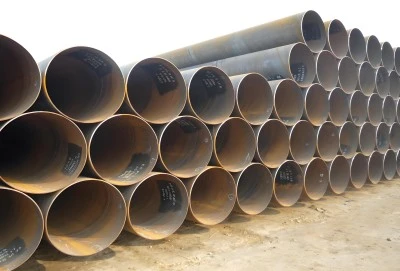When it comes to construction and engineering projects, choosing the right materials is crucial for ensuring structural integrity and longevity. One such essential material is the hollow section pipe, a versatile and robust option that has gained popularity across various industries. With an emphasis on their outer diameter, thickness, and length, we will examine the various sizes of hollow section pipes in this extensive guide. Regardless of your degree of expertise or expertise with construction supplies, this post will offer helpful details to support any decisions you make on the project that's coming up.
|
|
|
Hollow Section Pipe Dimensions
Hollow section pipes are known for their strength, durability, and versatility. These pipes come in a wide range of sizes to suit different applications, from small-scale residential projects to large industrial installations. The three primary dimensions that define a hollow section pipe are its outer diameter, thickness, and length. Let's delve deeper into each of these dimensions to understand their significance and available options.
Outer Diameter: From Compact to Colossal
The outer diameter of a hollow section pipe refers to the distance across the widest part of the pipe's circular cross-section. This dimension plays a crucial role in determining the pipe's load-bearing capacity and suitability for specific applications. Hollow section pipes are available in an impressive range of outer diameters, spanning from a compact 1/2" (21.3mm) to a massive 80" (2032mm).
This extensive range allows for remarkable flexibility in design and application. Smaller diameter pipes, such as those in the 1/2" to 4" range, are often used in residential construction, furniture making, and light industrial applications. Medium-sized pipes, typically between 4" and 24" in diameter, find their place in commercial construction, structural support systems, and various industrial processes. The larger diameter pipes, extending up to 80", are primarily employed in heavy industrial settings, large-scale infrastructure projects, and specialized engineering applications.
Thickness: Balancing Strength and Weight
The thickness of a hollow section pipe is a critical factor that influences its strength, weight, and cost. It refers to the distance between the outer and inner surfaces of the pipe wall. Hollow section pipes are available in a range of thicknesses, typically expressed in terms of schedule (SCH) numbers. The thickness range for these pipes extends from SCH10 to SCH160, corresponding to wall thicknesses of approximately 6.35mm to 59.54mm.
Selecting the appropriate thickness is a balancing act between strength requirements and weight considerations. Thinner-walled pipes (SCH10 to SCH40) are lighter and more economical, making them suitable for applications where weight is a concern or where extreme strength is not necessary. These pipes are often used in light-duty structural applications, fencing, and decorative elements.
On the other hand, thicker-walled pipes (SCH80 to SCH160) offer superior strength and durability, making them ideal for high-pressure systems, heavy load-bearing structures, and applications exposed to harsh environmental conditions. These pipes are commonly found in oil and gas pipelines, high-rise building supports, and industrial processing plants.
Length: Customizable to Project Needs
The length of hollow section pipes is another dimension that offers considerable flexibility to meet diverse project requirements. Standard lengths for these pipes typically range from 6 meters to 18 meters. This range allows for efficient transportation and handling while still providing ample material for most applications.
However, it's important to note that many manufacturers offer custom length options to accommodate specific project needs. When non-standard lengths are needed for specialty applications or large-scale construction projects, this flexibility is especially helpful. Customizable widths can help cut down on waste, streamline the setup process, and require fewer joints or linkages.
Aspects including transportation limitations, assembly simplicity, and structural design requirements should be taken into account when calculating the length of hollow section pipes for the job at hand. While shorter lengths might be required for projects with space limits or complex geometries, in some circumstances longer pipes might be preferred to reduce the number of connections.
Choosing the Right Hollow Section Pipe for Your Project
A variety of elements must be taken into account when choosing the perfect hollow segment pipe, such as the specific requirements of your project, the cost, and the local building regulations. When selecting, bear a few essential factors in consideration:
- To figure out the ideal exterior diameter and width, evaluate the load-bearing demands of your building process.
- Consider the environmental conditions the pipe will be exposed to, such as corrosive elements or extreme temperatures, which may influence your choice of material and thickness.
- Evaluate the installation process and any space constraints that might affect the length of pipes you can use.
- Consult with a structural engineer or experienced professional to ensure your chosen hollow section pipe meets all necessary safety and performance standards.
- Compare the cost-effectiveness of different size options, keeping in mind that larger diameters and thicker walls generally come at a higher price point.
You may choose the ideal hollow section pipe for your project, guaranteeing top performance, durability, and affordability, by carefully weighing these variables and taking advantage of the large selection of diameters available.
Contact Longma for Hollow Section Pipes
Hollow section pipes are available in an extensive variety of dimensions, exhibiting the incredible versatility of this construction medium. These sizes encompass outer diameters of 1/2" to 80", thicknesses from SCH10 to SCH160," and lengths from 6m to 18m. This diversity allows engineers, architects, and builders to find the perfect solution for virtually any application, from small-scale residential projects to massive industrial installations.
As you embark on your next project, remember that the key to success lies in choosing the right hollow section pipe that balances strength, weight, and cost-effectiveness. By understanding the nuances of pipe dimensions and considering your specific project requirements, you'll be well-equipped to make an informed decision that ensures the longevity and performance of your structure.
If you're in the market for high-quality hollow section pipes, consider exploring the offerings from reputable manufacturers like Longma Group. With their extensive inventory covering various grades and impressive stock quantities, they're well-positioned to meet your project needs. For more information or to discuss your specific requirements, don't hesitate to reach out to them at info@longma-group.com.














